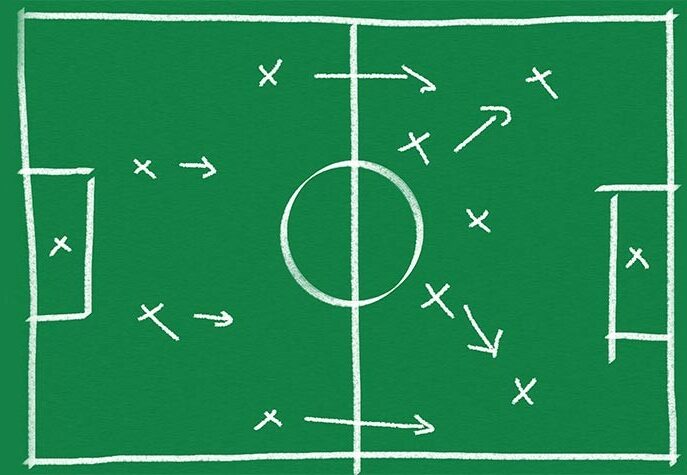Playing Different Positions

We have all been in that situation- your coach pulls you aside and says, “I am going to play you at left back today”. Panic starts to set in. For your entire life, you have been a center forward and now you are being asked to play a completely different position!? We often equate a position change with negativity. Thoughts like “maybe I was not good enough in my last position”, or “I am just going to let the team down in this new position”, are all too common. Throughout my career, I have learned to flip that script and see position changes as one of the most important developmental experiences to be had. Switching positions can offer an increase in skill development, improvement in soccer IQ and it can make you a better teammate.
In today’s game, positions are much more fluid. We see outside backs playing as wingers. We see an attacking center mid playing higher than the striker and we even see a center back pivot into a holding midfielder. Rigidly holding onto a position as “your position” will have some serious drawbacks in this new era of the game. When I was about 13 years old, I was selected for an ODP (throwing it way back here) camp where we played several friendly matches in front of scouts. At the end of the week, we received feedback from our coach and mine read “do not be pigeon-hold to attacking center mid, be open to try different positions”. I took this critique to heart. As soon as I got back to my club team, I offered to play in different attacking positions. To start, I was incredibly uncomfortable playing on the sides of the pitch. I never had to work with the out of bounds line before and I was used to playing within the frame of goal. Pushing myself to try different positions, allowed me to master different areas of the pitch. I developed the one v one skills that every winger should possess and I improved my soccer IQ by understanding new shooting angles. Yes, it was uncomfortable- but I would do it all over to reap the benefits.
As I progressed into the college game, playing was more about the performance rather than the development. One might think that college is the time to positionally specialize. While you do need to be competent on the pitch, a lack of versatility can actually lead you straight to the bench. The bench is where I started out my Freshman year at Brown University. There was a senior all-star playing the Ten and there was no way I was getting a start over her. So, I tapped into my work as a club player and offered to play winger. The only winger spot up for grabs was on the left and I was by no means a left footed player. I knew, however, that this was my chance to get on the pitch. Seven games in, I earned my starting position as a left forward and enjoyed being on the pitch. Every minute I spent out on the left, I was improving my lack-luster left foot. Today I can comparably use both feet and have actually scored more goals on my left than I have on my right. By being open to new positions, you additionally prove yourself to be a versatile player. From a coaches perspective, versatility holds value especially throughout formation changes. If you are struggling to get minutes on the pitch, do not hesitate to try a new position!
During these past years as a professional player, I have really been working on how to be a good teammate. I have learned how to support others emotionally and I have specifically learned how to support my teammates through my movement on the pitch. When I am not on the
ball, I am constantly thinking about how to help the player that is on the ball. I learned that playing different positions can help you see the game through your teammate’s perspective, making your movement more intentional and helpful. While playing the Ten in France, my
teammate playing the Six had to miss a few matches. I was quick to offer my services as her replacement. My time spent at the Six gave me a new visual perspective on how I would like the Ten to move when the Six has the ball. When my teammate came back and I moved back into the attacking midfielder role, I was able to provide her with better movement and better passing lanes. Each position views the game a bit differently, pushing yourself to play in different roles will allow you to understand your teammates’ tendencies and desires, resulting in better team performances overall.
There is a lot to unpack in regards to positional fluidity. It is an uncomfortable task, but growth happens outside of your comfort zone! Pushing yourself to play different positions will aid in developing your skills on the ball. As you progress in your career, positional versatility is seen as valuable. Literally putting yourself in the position of your teammates will make you a more understanding teammate and a more intelligent player. So take the leap and embrace the change!

